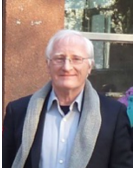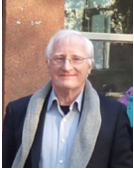Orbital Angular Momentum for Communications

It is well known that coherent light beams have an angular momentum associated with them. This is the well-known phenomenon of polarization and is the direction of oscillation of the electric field of the electromagnetic wave. In the quantum mechanical view of light, it is associated with the intrinsic spin of the photons. From a communications engineering viewpoint, this enables two orthogonal channels in, for instance satellite television, thus doubling the channel capacity of a given frequency.
In recent years it has been recognized that there is another angular momentum associated with a coherent light beam. This is called orbital angular momentum (OAM) and is also associated with a quantum mechanical parameter. It corresponds to solutions to Maxwell's equations with helical wavefronts and, unlike polarization, can, in principle, take infinitely many orthogonal states. The OAM of a coherent beam can be any integer. Creation of low integer OAM states is not very difficult with both metamaterials and computer generated holograms being used. Similar devices can be used to filter light beams to detect such states.
The ability to reliably create and detect such states holds great potential for communications using electromagnetic waves, both in free space and in optic fibres. Effectively, it is possible to create a number of orthogonal communication channels at a given frequency in an optical fibre.
Our speaker will talk about the theoretical ideas behind this new technology, as well as a few practical aspects and uses in communications.
Date and Time
Location
Hosts
Registration
-
 Add Event to Calendar
Add Event to Calendar
Speakers
 Professor Bill Moran
Professor Bill Moran
Orbital Angular Momentum for Communications
Bill Moran currently serves, since 2017, as Professor of Defence Technology in the University of Melbourne. From 2014 to 2017, he was Director of the Signal Processing and Sensor Control Group in the School of Engineering at RMIT University, from 2001 to 2014, a Professor in the Department of Electrical Engineering, University of Melbourne, Director of Defence Science Institute in University of Melbourne (2011-14), Professor of Mathematics (1976–1991), Head of the Department of Pure Mathematics (1977–79, 1984–86), Dean of Mathematical and Computer Sciences (1981, 1982, 1989) at the University of Adelaide, and Head of the Mathematics Discipline at the Flinders University of South Australia (1991–95). He was Head of the Medical Signal Processing Program (1995–99) in the Cooperative Research Centre for Sensor Signal and information Processing. He was a member of the Australian Research Council College of Experts from 2007 to 2009. He was elected to the Fellowship of the Australian Academy of Science in 1984. He holds a Ph.D. in Pure Mathematics from the University of Sheffield, UK (1968), and a First Class Honours B.Sc. in Mathematics from the University of Birmingham (1965). He has been a Principal Investigator on numerous research grants and contracts, in areas spanning pure mathematics to radar development, from both Australian and US Research Funding Agencies, including DARPA, AFOSR, AFRL, Australian Research Council (ARC), Australian Department of Education, Science and Training, and Defence Science and Technology, Australia. His main areas of research interest are in signal processing both theoretically and in applications to radar, waveform design and radar theory, sensor networks, and sensor management. He also works in various areas of mathematics including harmonic analysis, representation theory, and number theory.

